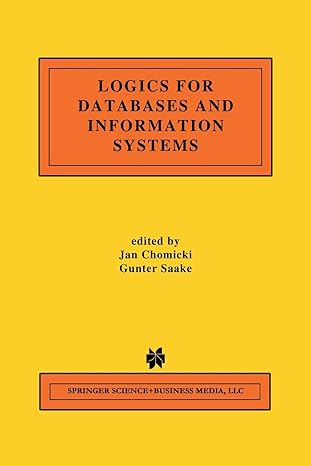
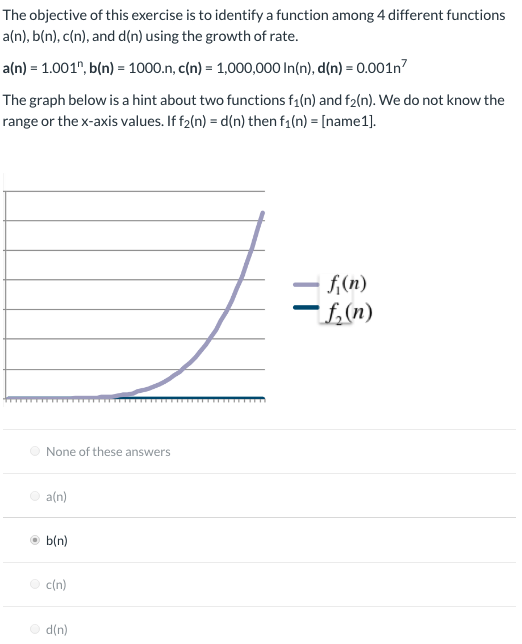
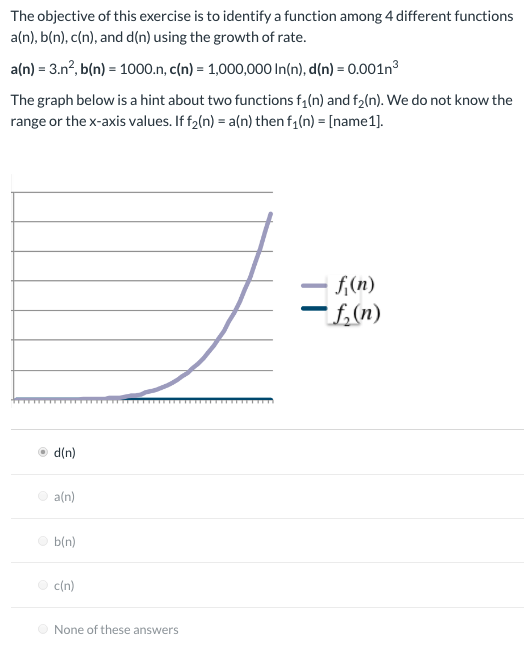

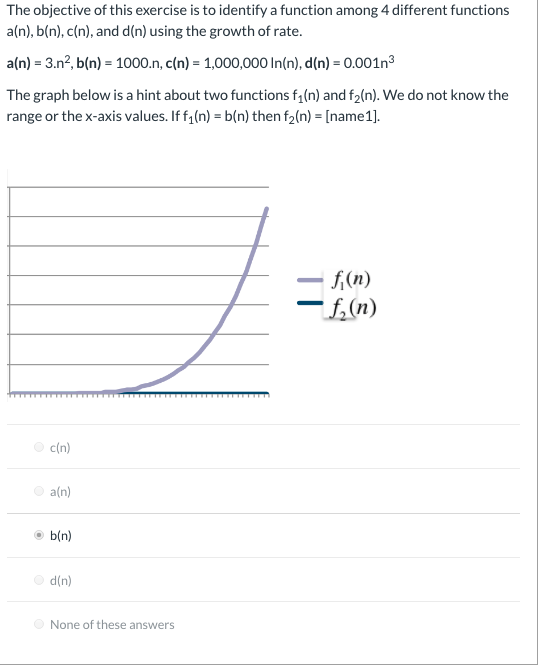
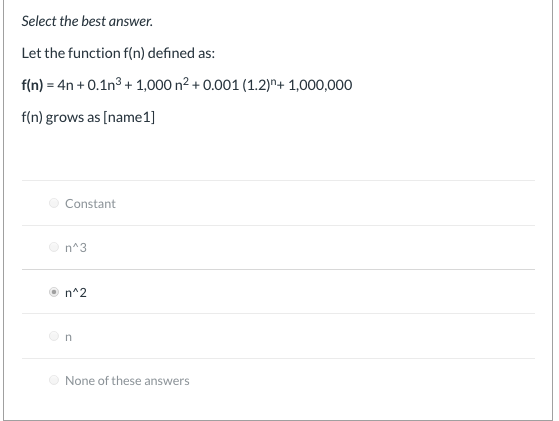


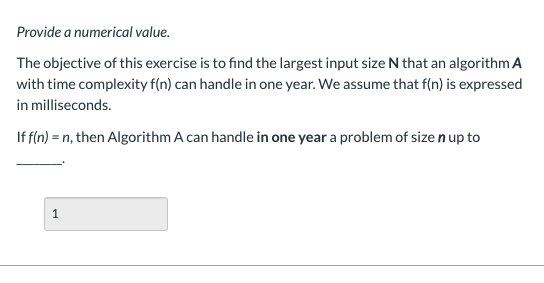
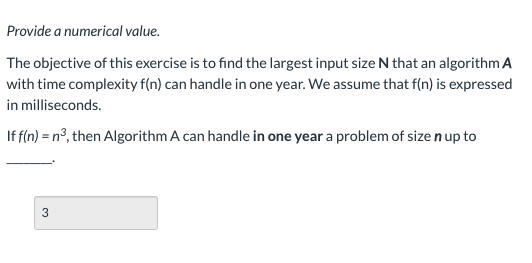
The objective of this exercise is to identify a function among 4 different functions a(n), b(n), cn), and d(n) using the growth of rate. a(n) = 1.1", b(n) = In(In(n)), c(n) = In(n), d(n) = n2 The graph below is a hint about two functions f(n) and f2(n). We do not know the range or the x-axis values. If f(n) = c(n) then fz(n) = [name 1). f(n) - f(n) b(n) a(n) c(n) din) None of these answers The objective of this exercise is to identify a function among 4 different functions a(n), b(n), cn), and d(n) using the growth of rate. a(n) = 1.001", b(n) - 1000.n, c(n) = 1,000,000 In(n), d(n) = 0.001n? The graph below is a hint about two functions fi(n) and f2(n). We do not know the range or the x-axis values. If f(n) = (n) then fi(n) [name 1). - f(n) f(n) None of these answers an) b(n) c(n) d(n) The objective of this exercise is to identify a function among 4 different functions a(n), b(n), c(n), and d(n) using the growth of rate. a(n) = 3.n?, b(n) = 1000.n, c(n) = 1,000,000 In(n), d(n) = 0.001n The graph below is a hint about two functions f(n) and f(n). We do not know the range or the x-axis values. If f(n) = a(n) then f(n) = [name 1). f(n) f. (n) d(n) a(n) b(n) can) None of these answers Select the best answer. Let the function f(n) defined as: f(n) = 1,000,000n 100+ 0.000000001 (1.2)"+ 1,000,000 f(n) grows as [name 1] (1.2)^n n 100 Constant 1,000,000 The objective of this exercise is to identify a function among 4 different functions a(n), b(n),c(n), and d(n) using the growth of rate. a(n) = 3.n?, b(n) = 1000.n, c(n) = 1,000,000 In(n), d(n) = 0.001n3 The graph below is a hint about two functions f(n) and f(n). We do not know the range or the x-axis values. Iff7(n) = (n) then f(n) = [name1]. f(n) f,(n) c(n) an b(n) d(n) None of these answers Select the best answer. Let the function f(n) defined as: f(n) = 4n+ 0.1n3 + 1,000 n2 +0.001 (1.2)"+ 1,000,000 f(n) grows as [name1] Constant n^3 on 2 On None of these answers Select the best answer. Let the function f(n) defined as: f(n) = 4n+ 10.5n+ 1,000,000 f(n) grows as [name1] On Constant 4n 10.5n None of these answers Select the best answer. The objective of this exercise is to identify a function among 4 different functions a(n), b(n), c(n), and d(n) using the growth of rate. a(n) = n2, b(n) = n, c(n) = In(n), d(n) = n3 The graph below is a hint about two functions f(n) and f(n). We do not know the range or the x-axis values. If f(n) = b[n) then f(n) = [name 1). f(n) f. (n c(n) a(n) b(n) d(n) None of these answers Provide a numerical value. The objective of this exercise is to find the largest input size that an algorithm A with time complexity f(n) can handle in one year. We assume that f(n) is expressed in milliseconds. If f(n) = n, then Algorithm A can handle in one year a problem of size n up to Provide a numerical value. The objective of this exercise is to find the largest input size N that an algorithm A with time complexity f(n) can handle in one year. We assume that f(n) is expressed in milliseconds. If f(n)=n?, then Algorithm A can handle in one year a problem of size n up to
















